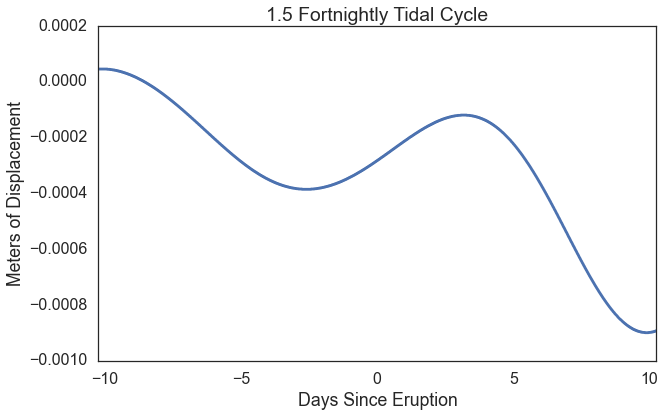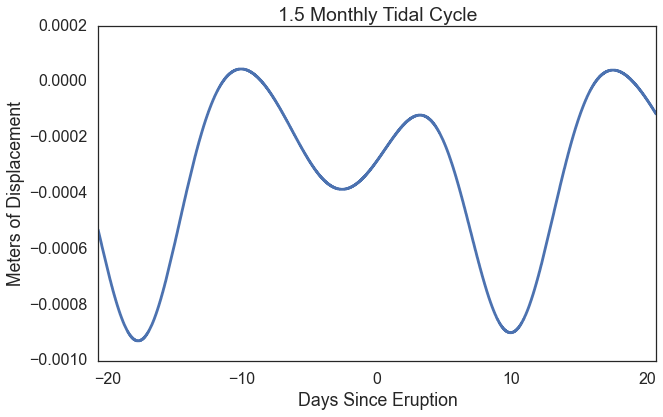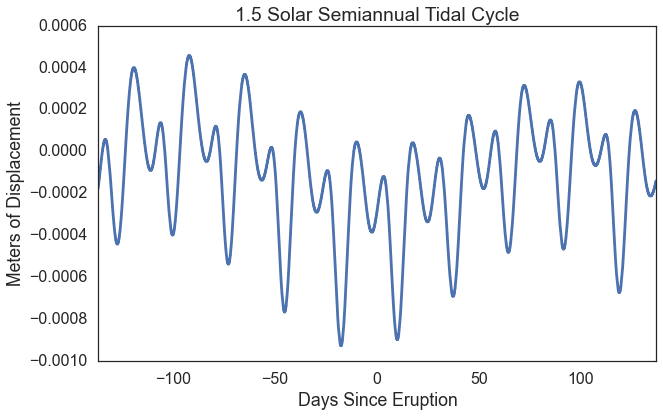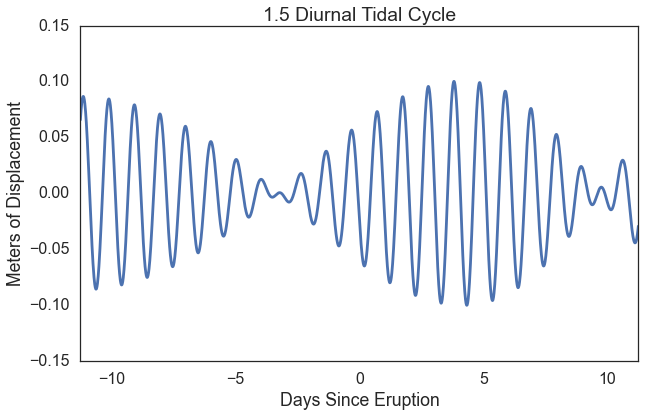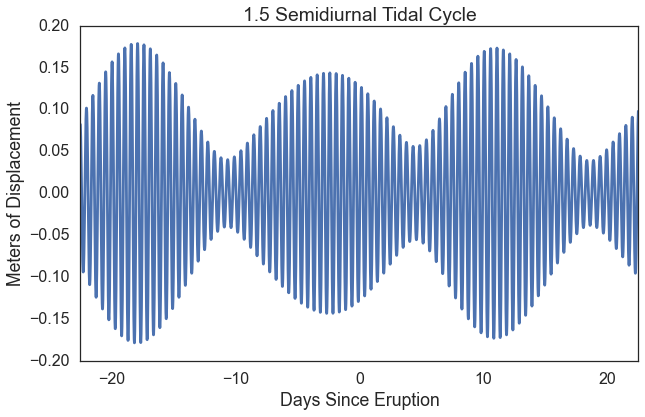Data Wrangling
Volcano and Eruption Data
Volcano and eruption data for the last ~12,000 years was downloaded from the Smithsonian Global Volcanism Program Webpage (www.volcano.si.edu). This data includes 10,808 eruptions from 1,561 volcanoes worldwide. In the map shown below, we show every volcano listed in the database.

Before we could use this dataset, we had to eliminate unreliable data. First, we eliminated all eruptions that were listed as unconfirmed or discredited. Next, we looked at start dates of eruptions. Because we are correlating onset of eruption with tidal phase, it is important to know the exact start date with no uncertainties. We eliminated any eruption that was missing a start year, month, or day, or had large uncertainties in the start date. After all of this we were left with 3,624 eruptions at 457 volcanoes with start dates ranging from 48 C.E. to 2014 C.E as shown in the histogram below.
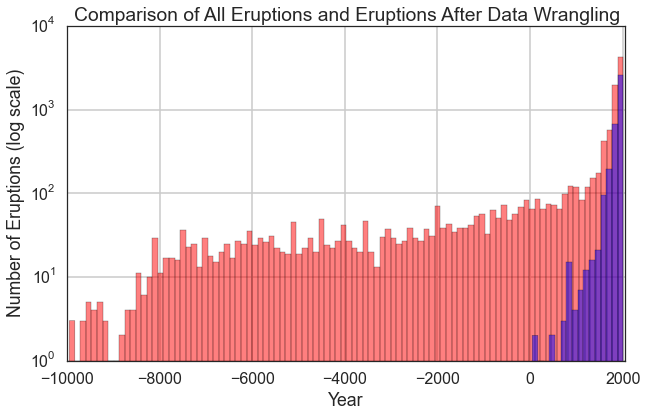
The eruption and volcano datasets also include a variety of features which are important when studying relationships between tides and eruptions. Below is a list of the most important volcanic features.
- Volcanic Explosivity Index (VEI)
- Dominant Rock Type
- Eruption Length
- Elevation
- Tectonic Setting
- Location
Phase Data
In order to check whether eruptions are related to solid earth tides, for each tidal force we must get the tidal spectrum. To do this we modified a fortran code courtesy of Jerry Mitroveca of the EPS department which takes in a date and location and outputs a time series of the tidal spectrum. Below we have calculated the tidal spectrum for an arbitrary eruption for long period (fortnightly, month, semiannual) , diurnal, and semidiurnal tides. The shape of the spectrum are the same no matter where you are on the globe they are just shifted in time and amplitude. The amplitude of the spectrum represents meters of displacement of the crust .
We then calculated the tidal spectra for every eruption. We already know the periods for the various tidal forces from astronomy, and with that we can easily calculate the phase at which a volcano erupted. The max within a cycle was set to zero degrees and the phase of the eruption calculated from there. Below are figures of one and a half cycles of the five tidal forces we studied.
